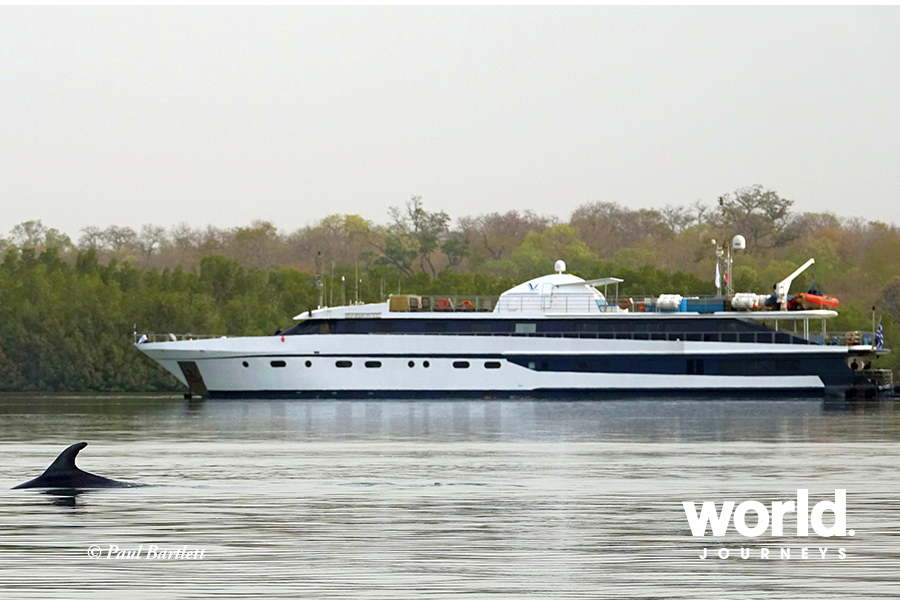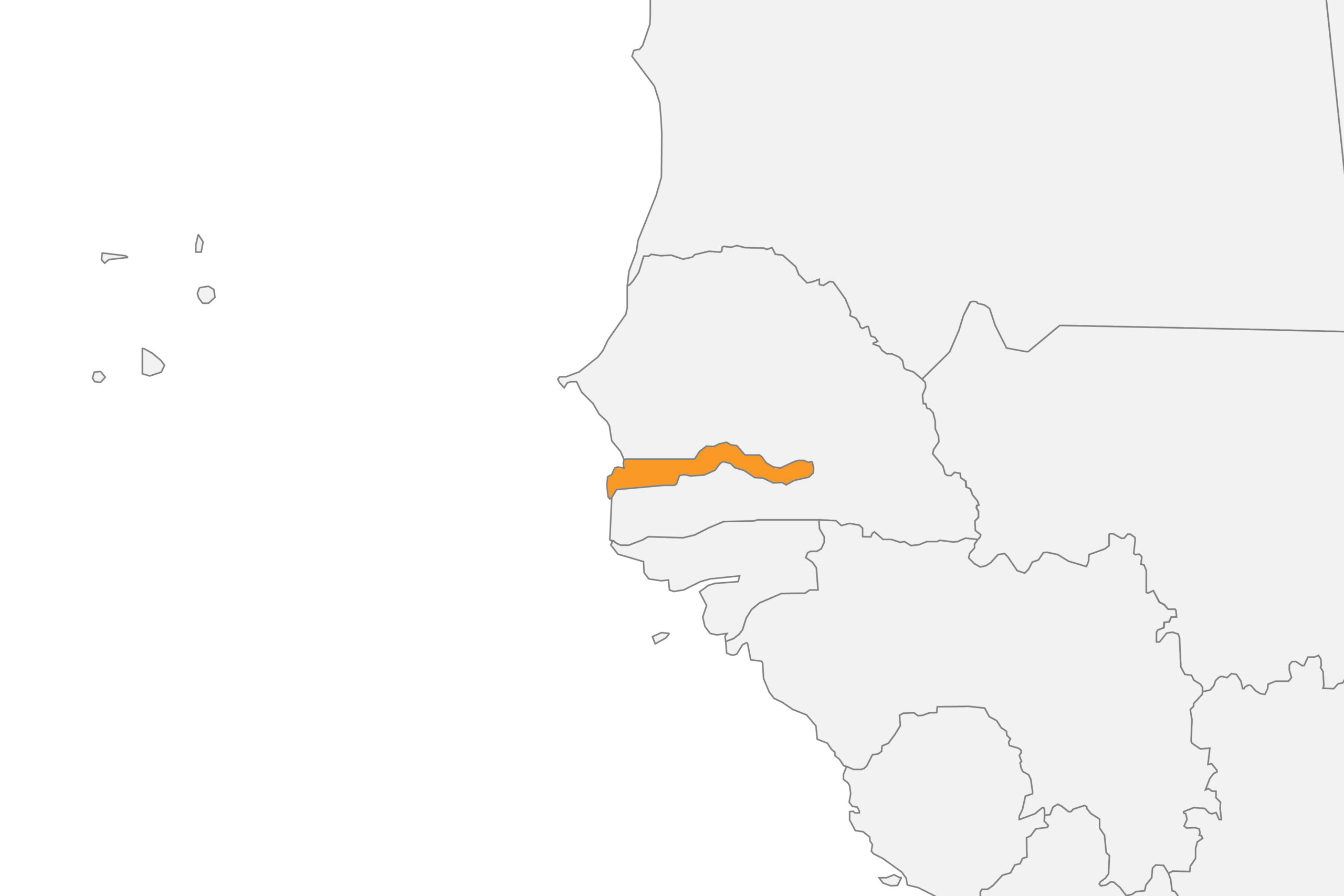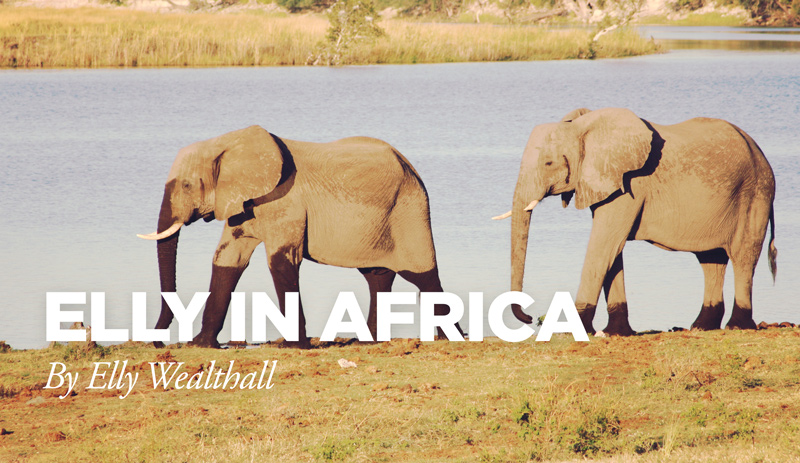Gambia Tours
Officially known as The Republic of The Gambia, this tiny West African country has a small but beautiful coastline scattered with pretty palm lined beaches.
Surrounded by Senegal, Gambia offers travellers an eco-friendly experience with pretty lagoons, an abundance of wildlife, eco-lodges and amazing flora and fauna. Travel the Gambia river to explore to the Bao Bolong Wetland Reserve and Kiang West National Park – a truly unique way to experience Africa!
Read More...Banjul
This small port city is the capital of Gambia and the gateway to the 700-mile Gambia River. The city sits on an island connected by a bridge to the mainland and while fairly untouched by tourists the sandy streets are a fabulous place to wonder and admire the colonial architecture. For an immersion into local culture the Albert Market is always humming with local life!
Kunta Kinteh Island
Located in the River Gambia, this tiny island was formerly known as James Island which has a dark history of slave trading. Visitors can explore the remnants including dungeons, caves and gun batteries.
Abuko Nature Reserve
The country’s first designated wildlife reserve and while small it has an incredible diversity of wildlife and vegetation. The reserve is home to bushbucks, porcupines, monkeys and over 200 species of birdlife.
Kiang West National Park
One of the largest important wildlife reserves in The Gambia, it is home to over 250 species of birds, monitor lizards, warthog, marsh mongoose, Guinea baboons, bushbuck and warthogs. You may even be lucky enough to spot leopard and hyenas!
Bao Bolong Wetland Reserve
The reserve has three distinct ecosystems which include mangrove forest, salt marsh and savannah woodland. A birders paradise, the reserve also features six major bolongs (creeks) home to numerous migratory birds, including the Pel’s fishing owl, African fin foot and brown-necked parrot.
River Gambia National Park
The park is made up of five islands and one of the last refuges for the threatened hippos in Gambia, and is also home to the Chimpanzee Rehabilitation Project with around fifty chimps on the larger islands.
Gambia is warm year round with the best time to visit during the long dry season of mid-October to early June.
Back in the day I worked for a large UK based travel company and The Gambia was hot business so I went to find out what all the fuss was about. The smallest country on mainland Africa, this little strip of land is surrounded, almost completely, by Senegal, save 80kms or so of Atlantic coast. Running on UK time, it was a super popular ‘flop and drop’ destination but I was determined go further than the bars, restaurants and markets of Kotu and Kolili.
I started at the Makasutu Culture Forest, 1000 hectares of mangrove wetlands and palm trees said to be guarded by the mythical Ninki Nanka, a sort of threatening West African Lochness Monster! The locals have used the plants of this region for centuries to cure illness and boost fertility. The stunning setting and active wildlife, particularly the baboons, made for an entertaining afternoon.
Fascinated with ancient cultures, I also hit up the Wassu stone circles. Dating from 500-1000AD, excavations have uncovered a number of artefacts and enough evidence to suggest the circles of between 8 and 14 stone pillars are burial sites. The stones have come from nearby quarries and shaped into pillars by iron tools – the sort of set up that is initiated by an organised and reasonably wealthy ancient population.
Known to live in the Gambia River, I was ridiculously hopeful of spotting an African manatee even though I know they are secretive and highly vulnerable to pollution and deforestation. The Serer people say they are guardians of the future and therefore sacred – but my manatee whispering skills abandoned me and I had to content myself with a lazy hippo.
So, yes, go for the sunshine, African beats from the bars and bright, smiling Gambian faces, but perhaps look a little further too. You’ll be surprised.
Kate Couling
Currency
Gambian dalasi
Language
While tribal languages are used between Gambians, the official language is English.
Why we love it
An incredibly unique destination in Africa with a big focus on wildlife, birdlife and culture, we love it for the lesser explored national parks and reserves.
Weather
March is the hottest month of the year with temperatures sitting around 35 degrees. Towards the end of June the humidity is higher going into the green season of July and August where rain is frequent at night.
Social customs and quirks
A typical Gambian family will eat around a communal bowl which has a mound of rice. A guest may be given their own bowl or plate of food to eat, however do not start eating until your hosts begin.
It is customary to remove your shoes when entering any family room or hallway, and greet people with your right hand and receive with your left.
Festivals and events
There are a number of festivals that take place each year in Gambia based around Islamic festivals and local traditions including Ramadan.
Naming ceremonies will take place one week after a child is born with the elders of the village gathering in the morning and naming the baby as an animal is slayed (depending on the wealth of the family). Then all villagers are invited to join the celebrations.
Music forms part of everyday life in The Gambia and can be heard wherever you go!
Health
There are currently no requirements to enter The Gambia
Notes *Please be aware that Health information is subject to change at any time and you should always double check these requirements at the time of booking and before travel.





